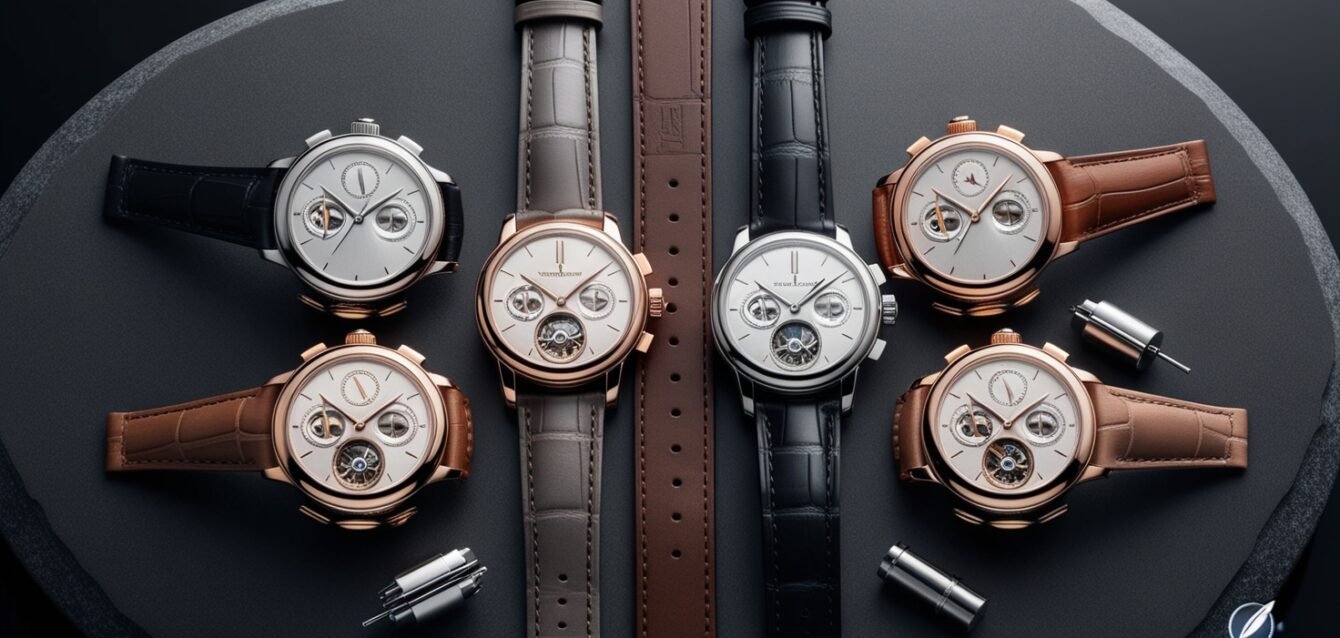The Evolution of Luxury Watches
The journey of luxury watches dates back to the 16th century when the first portable timepieces were crafted in Europe. Initially, these early watches were basic devices primarily designed for timekeeping. However, as artisans began to explore advanced techniques, watches evolved into intricate instruments that showcased the skill and craftsmanship of their makers. The introduction of springs and gears allowed for more precise time measurement, marking a significant milestone in the development of horology.
The 18th and 19th centuries ushered in a new era of watchmaking, characterized by remarkable technical innovations and an expanding market for luxury timepieces. Renowned watchmakers such as Abraham-Louis Breguet and John Arnold began to incorporate complications into their designs. Features such as perpetual calendars, minute repeaters, and chronographs not only elevated the functionality of watches but also contributed to their allure as status symbols for the affluent.
With the industrial revolution, the production of watches underwent a transformation. The introduction of machinery led to the mass production of timepieces, making them more accessible while simultaneously driving competition among luxury brands. However, this shift sparked debates about the authenticity and craftsmanship of watches made in factories compared to those handcrafted by skilled artisans. In response, prestigious brands focused on preserving traditional methods while embracing modern technology, creating watches that reflect a harmonization of both worlds.
The late 20th century saw the rise of quartz technology, revolutionizing the watch industry. Quartz watches made timekeeping exceedingly accurate, often at a lower cost than their mechanical counterparts. Despite their initial dominance, luxury brands maintained their commitment to mechanical watchmaking, emphasizing the artistry and heritage involved in producing these elegant devices. Today, luxury watches represent a blend of technological innovation and exquisite design, catering to discerning collectors while continuing the legacy of craftsmanship that began centuries ago.
(Purchase today by clicking on the image)
Innovations in Watch Technology
The luxury watch industry has witnessed significant technological advancements that have transformed the way timepieces are designed and utilized. One of the most notable innovations is the introduction of quartz movements. First developed in the late 20th century, quartz technology brought unparalleled accuracy to timekeeping, surpassing traditional mechanical movements. This shift not only improved functionality but also allowed watchmakers to explore new designs, making luxury watches more accessible and versatile.
In recent years, the integration of smartwatch capabilities into traditional watch designs has marked a noteworthy evolution in luxury watches. Brands have embraced technology without compromising the elegance that defines their reputations. Hybrid models now combine analog designs with smart features, such as fitness tracking, notifications, and heart rate monitoring. This fusion enhances the everyday utility of luxury watches, allowing wearers to remain connected without sacrificing style.
Moreover, the use of advanced materials such as ceramic and titanium has revolutionized the durability and appeal of luxury watches. Ceramic, known for its scratch resistance and lightweight properties, provides a modern aesthetic that complements traditional craftsmanship. Similarly, titanium offers a robust alternative to stainless steel, significantly reducing the weight of the watch while maintaining strength and durability. The application of these high-tech materials not only enhances the functionality of luxury watches but also preserves their exquisite visual appeal.
Through these innovations, the luxury watch market continues to evolve, striking a balance between cutting-edge technology and timeless elegance. As manufacturers embrace new techniques and materials, the potential for future advancements appears limitless. The ongoing blend of aesthetics and functionality ensures that luxury watches remain relevant in an ever-changing landscape, appealing to both collectors and modern consumers alike.
The Art of Design in Luxury Watchmaking
In the world of luxury watches, the art of design stands as a paramount factor that significantly elevates their appeal. Designers and watchmakers collaborate harmoniously to create timepieces that encapsulate beauty and precision, merging technological innovation with aesthetic elegance. This synergy between artistry and craftsmanship not only enhances the watch’s visual presentation but also influences its functionality and overall market desirability.
When examining the aesthetics of a luxury watch, various elements come into play, such as dial designs, case shapes, and strap materials. Each component contributes to the watch’s identity and communicates its brand heritage and values. For instance, the intricate artistry often showcased in the dial can range from simple minimalist designs to elaborate motifs, indicating the watchmaker’s skill and creativity. Elements like guilloché patterns or enamel work can embody a unique character, capturing the attention of enthusiasts and collectors alike.
The shape of the case also plays a significant role in the design narrative of luxury watches. Classic forms such as round, square, or tonneau are meticulously crafted to balance both aesthetic appeal and ergonomic functionality. Furthermore, the choice of strap materials—ranging from leather to metal and beyond—enhances the sophistication of the timepiece while ensuring durability and comfort for the wearer.
Aspects of design are not merely superficial; they can also reflect the cultural narratives and innovations of the era in which a watch was created. Rich histories embedded within the design choices of iconic pieces drive their desirability, making them symbols of status and taste. Ultimately, the art of design in luxury watchmaking captures a blend of history, emotion, and technological achievement, resulting in extraordinary pieces that stand the test of time.
The Future of Luxury Watches
The landscape of luxury watches is transforming, driven by several key trends that are expected to shape the industry in the coming decade. Sustainability has emerged as a crucial consideration for both manufacturers and consumers. As environmental concerns grow, luxury brands are increasingly focusing on eco-friendly materials and production processes. These brands are innovating by integrating recycled materials, such as precious metals and sustainable leather, into their designs. This shift not only addresses consumer demands but also reinforces the industry’s commitment to responsible luxury.
Personalization is another significant trend poised to redefine luxury watchmaking. As consumers seek unique identities through their possessions, brands are beginning to offer customized options that allow for greater individual expression. From bespoke dial designs to personalized engravings, these offerings enhance the emotional connection between the consumer and the watch. Luxury brands, traditionally associated with exclusivity, are now navigating a fine balance between personalization and maintaining their prestigious reputation.
Furthermore, technology continues to leave an indelible mark on the luxury sector. While traditional craftsmanship remains integral to luxury watches, modern innovations like smart technology are reshaping how these timepieces are perceived. Hybrid watches that merge traditional mechanical features with smart functions cater to tech-savvy consumers who appreciate both classic and contemporary elements. Moreover, advancements in watchmaking technology may streamline production, allowing for enhanced precision without compromising the artistry of handcrafted pieces.
Luxury brands face the challenge of adapting to a rapidly changing digital marketplace. The rise of e-commerce has democratized access to luxury, prompting brands to reevaluate their strategies concerning exclusivity and consumer engagement. Maintaining a sense of exclusivity in a world driven by accessibility will require brands to forge deeper connections with their clientele, ensuring that luxury remains synonymous with not just quality, but also an exceptional experience.





